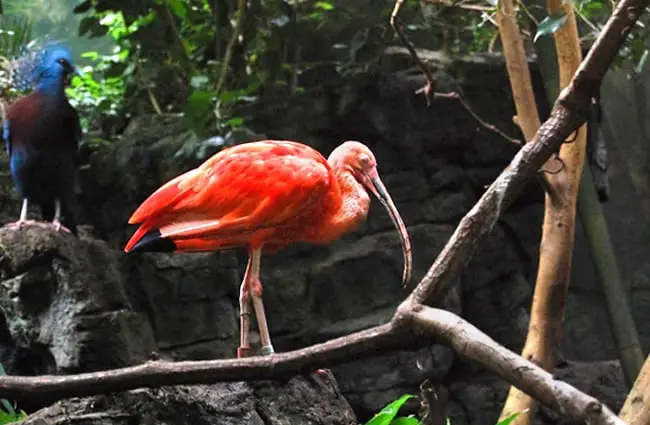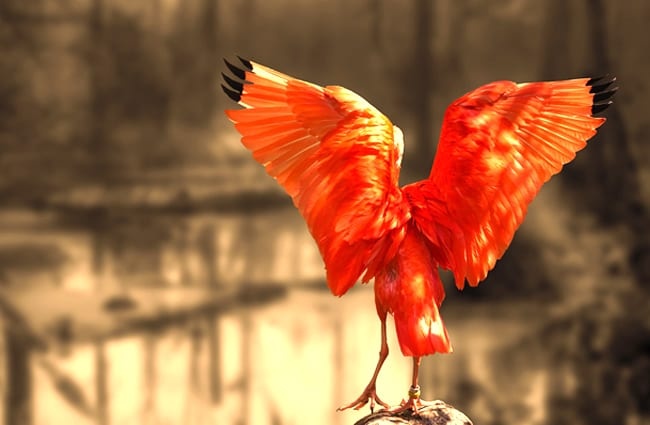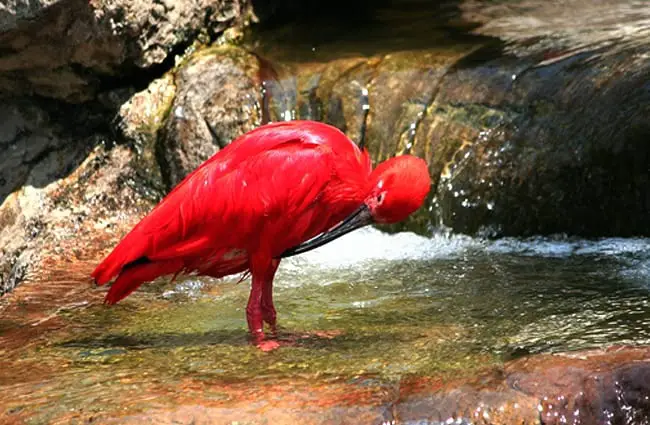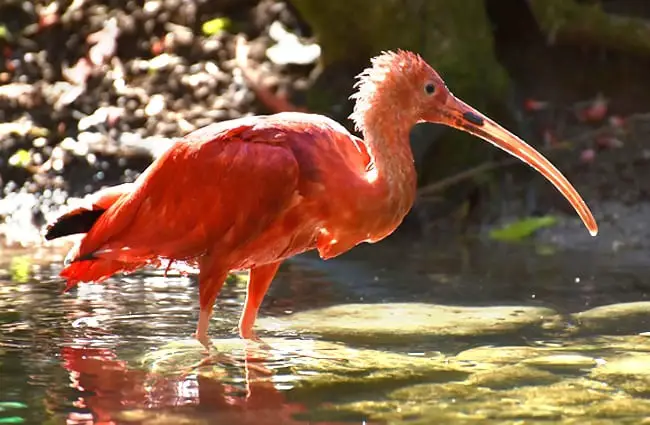A Vibrant Jewel of the Wetlands: Exploring the World of the Scarlet Ibis
The Scarlet Ibis is a bird of breathtaking beauty that enchants birdwatchers and scientists alike. Its brilliant crimson plumage makes it instantly recognizable—a splash of vivid color against the greens and browns of its wetland habitats. But beyond its stunning appearance lies a fascinating story of adaptation, behavior, and ecological importance. This guide explores the life of the Scarlet Ibis, its natural history, habitat, behavior, and the challenges it faces.

Understanding the Scarlet Ibis
Physical Characteristics and Identification
The Scarlet Ibis (Eudocimus ruber) is a medium-sized bird, typically measuring between 17 and 20 inches in length with a wingspan of around 36 to 39 inches. Adults exhibit a striking scarlet red coloration across their entire plumage, which becomes even more vivid during the breeding season. This hue comes from carotenoid pigments obtained through their diet. Juveniles are born with a greenish gray plumage that gradually transitions to adult coloration over several months. A distinctive feature is their long, decurved bill, which is adapted for probing in mud and silt for food. Their legs and feet are usually pale gray.
Habitat and Distribution
Scarlet Ibises are native to tropical South America and parts of the Caribbean. Their range extends from Venezuela and Trinidad & Tobago through Guyana, Suriname, French Guiana, and Brazil, and northward into Panama. These birds are strongly associated with shallow wetlands, including mangrove swamps, marshes, lagoons, and muddy coastal areas. They require access to both feeding and roosting sites, often preferring secluded islands or dense vegetation for safe nighttime rest. The availability of suitable wetland habitats is crucial for their survival.

The Scarlet Ibis Diet and Feeding Behavior
Scarlet Ibises are primarily foragers, consuming a diet largely composed of aquatic invertebrates. Their specialized bills are perfectly adapted for probing in mud and silt for small crustaceans, mollusks, insects, and larvae. They also eat small fish and plant matter. Typically, they feed in shallow water, walking along the substrate and rhythmically sweeping their bills from side to side. This foraging behavior is often conducted in flocks, creating a stunning visual spectacle. The consumption of carotenoid-rich crustaceans contributes to their vibrant coloration.
Life Cycle: Mating, Nesting, and Reproduction
Scarlet Ibises are generally monogamous, forming long-term pair bonds. Breeding season usually coincides with the rainy season, when food resources are abundant. They engage in elaborate courtship displays that involve vocalizations, preening, and aerial maneuvers. They construct nests in trees or shrubs, often in colonies, using sticks and vegetation. A typical clutch consists of three to five eggs, which are incubated by both parents for about 21 to 23 days. Chicks are altricial, meaning they are born helpless and require extensive parental care. Young birds fledge about 35 to 40 days after hatching, but they continue to depend on their parents for food for several weeks.

Ecological Role and Interactions
Scarlet Ibises play an important role in their ecosystems. As foragers, they help control populations of aquatic invertebrates. Their droppings contribute to nutrient cycling in wetlands. They serve as prey for larger predators such as raptors and mammals. They often forage alongside other wading birds, creating diverse avian communities. The health of Scarlet Ibis populations is often an indicator of the overall health of wetland ecosystems.
Interactions with Other Species
Scarlet Ibises frequently form mixed foraging flocks with other wading birds, such as herons and egrets. This behavior can enhance foraging efficiency and provide increased protection from predators. They sometimes engage in kleptoparasitism, stealing food from other birds, and they compete with other wading birds for food resources.
Scarlet Ibis and Human Interactions
Throughout history, Scarlet Ibises have held cultural significance for indigenous communities in South America. Their feathers have been used for ceremonial purposes and ornamentation. In some areas, they have been hunted for food. Habitat loss and degradation due to deforestation, agriculture, and urbanization pose significant threats to their populations. Pollution and climate change also present challenges. Conservation efforts, including habitat protection and sustainable management practices, are crucial for ensuring their long-term survival.

Spotting Scarlet Ibises in the Wild
If you are planning a trip to the Scarlet Ibis’s range, the best time to see them is during the breeding season. Look for shallow wetlands, mangrove swamps, and coastal lagoons. Bring binoculars for optimal viewing. Observe them from a distance to avoid disturbing their natural behavior. Respect their habitat and follow responsible wildlife viewing practices.
Advanced Insights for Budding Zoologists
Evolutionary History
The Scarlet Ibis belongs to the family Threskiornithidae, which includes ibises and spoonbills. Phylogenetic studies suggest that this family originated in the Paleogene period, approximately 60 million years ago. The Scarlet Ibis is believed to have diverged from other ibis species relatively recently. Their vibrant coloration is thought to have evolved through sexual selection, with brighter individuals being more attractive to potential mates.
Conservation Status and Threats
The Scarlet Ibis is currently listed as Least Concern by the International Union for Conservation of Nature (IUCN). However, several populations are declining due to habitat loss, pollution, and climate change. The loss of mangrove forests, in particular, is a major threat, as these ecosystems provide crucial foraging and nesting habitat. Rising sea levels and increased frequency of extreme weather events also pose challenges. Effective conservation strategies require international cooperation and sustainable management practices.

Caring for Scarlet Ibises in Captivity
Zookeepers caring for Scarlet Ibises must provide a spacious enclosure with access to both land and water. A varied diet consisting of crustaceans, mollusks, insects, and plant matter is essential. Regular veterinary care and monitoring of health are crucial. Enrichment activities, such as foraging opportunities and social interaction, are important for their well-being. Avoid overcrowding and provide ample space for breeding. Maintaining water quality and hygiene is essential to prevent disease outbreaks.

A Final Note
The Scarlet Ibis is a remarkable species that embodies the beauty and fragility of our natural world. By understanding its life history, ecological role, and the threats it faces, we can contribute to its conservation and ensure that future generations can continue to marvel at this vibrant jewel of the wetlands.

![Red Angus Closeup of a beautiful Red Angus cowPhoto by: U.S. Department of Agriculture [pubic domain]https://creativecommons.org/licenses/by/2.0/](https://animals.net/wp-content/uploads/2020/03/Red-Angus-4-238x178.jpg)




![Red Angus Closeup of a beautiful Red Angus cowPhoto by: U.S. Department of Agriculture [pubic domain]https://creativecommons.org/licenses/by/2.0/](https://animals.net/wp-content/uploads/2020/03/Red-Angus-4-100x75.jpg)

